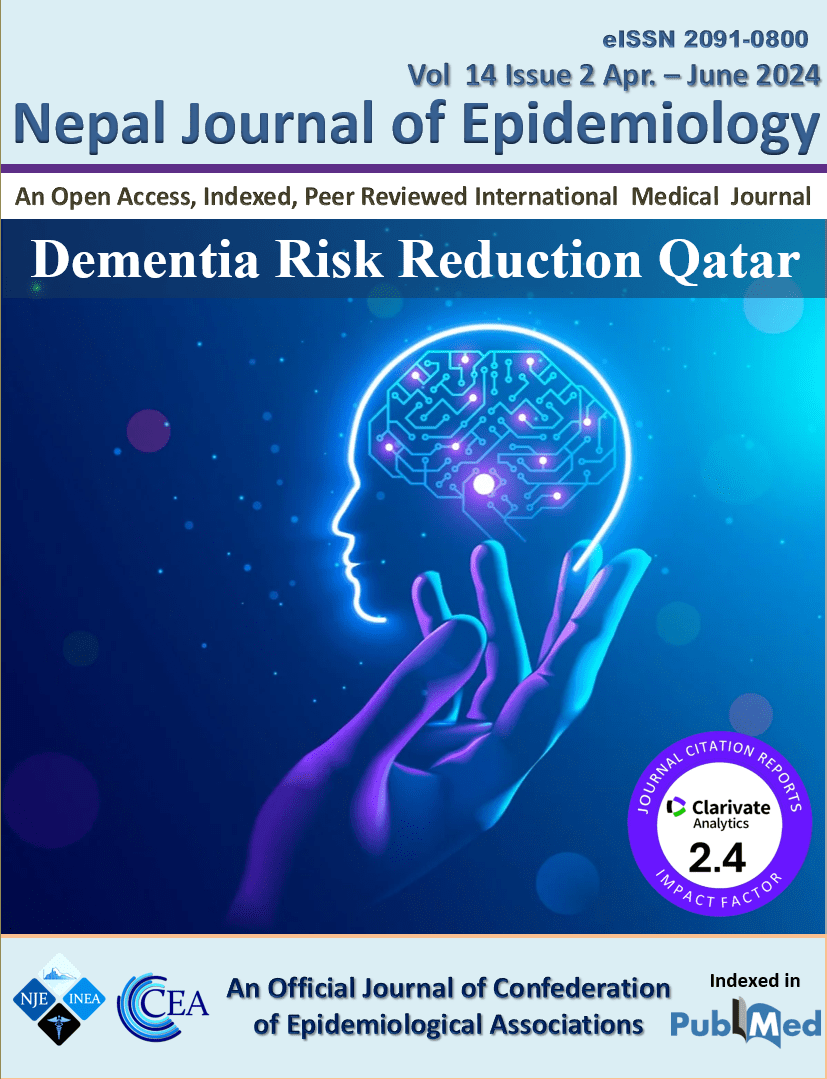Preliminary findings from the Delirium and Population Health Informatics Cohort (DELPHIC) – Qatar Study
DOI:
https://doi.org/10.3126/nje.v14i2.69366Keywords:
Dementia, Risk Reduction, Qatar, Delirium, MortalityAbstract
The DELPHIC-Qatar cohort study enrolled a total of 638 participants aged 70 years and above, with 277 males and 361 females from 10th March 2021 to 30th June 2024. The sex-wise distribution of risk and outcomes revealed significant findings. Among the participants, 47.8% were classified as high risk, with a higher proportion of females (50.7%) than males (44.0%). Conversely, 34.6% of the cohort was categorized as low-risk, with 36.5% of men and 33.2% of women. Delirium was observed in 17.6% of the total cohort, with a slightly higher incidence in males (19.5%) than in females (16.1%). Mortality rates were comparable between the sexes, with 23.8% in males and 23.0% in females, resulting in an overall mortality rate of 23.4% in the cohort.
Downloads
Downloads
Published
How to Cite
Issue
Section
License
Copyright (c) 2024 CEA & INEA

This work is licensed under a Creative Commons Attribution 4.0 International License.
- Upon acceptance Copyright on any research article is transferred in full to the Confederation of Epidemiological Associations (CEA) and International Nepal Epidemiological Association (INEA). The copyright transfer includes the right to reproduce and distribute the article in any form of reproduction (printing, electronic media or any other form).
- Articles in the Nepal Journal of Epidemiology are Open Access articles published under the Creative Commons CC BY License (https://creativecommons.org/licenses/by/4.0/)
- This license permits use, distribution and reproduction in any medium, provided the original work is properly cited.




